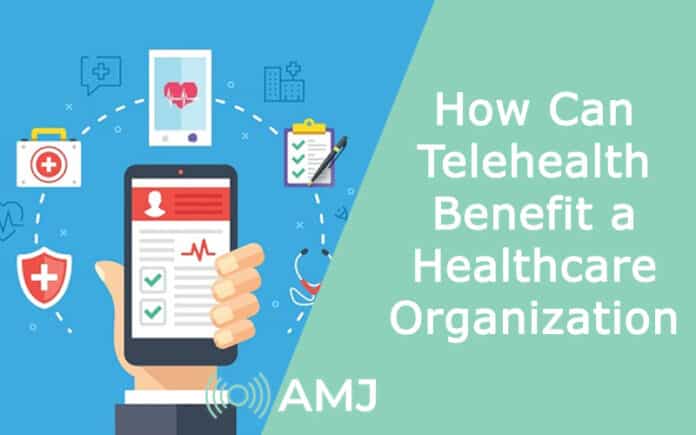Telehealth is a growing area of healthcare, and it’s becoming more important than ever. As technology improves, and new communication tools like Skype become more popular, telehealth initiatives are becoming more common. But what are they? And how can they help your organization? In this article I’ll explain why telehealth matters to the future of healthcare.
Contents
- 1 Telehealth Allows to Communicate via Video and Audio
- 2 Telehealth is not Just for Patients and Their Families
- 3 Telehealth Can Be Used for Education, Training and Research
- 4 Telehealth is More Efficient than Physical Presence
- 5 Communication Tools Give the Leg Up to Telehealth Initiatives
- 6 When and Where to Use Telehealth
- 7 Creating a Policy Setting Out Who is Allowed to Use Telehealth is Important
- 8 Telehealth Makes it Possible for All People to Access Medical Services
- 9 Conclusion
Telehealth Allows to Communicate via Video and Audio
Telehealth, or the delivery of health care remotely, has a number of benefits for healthcare organizations. Telehealth allows health care professionals to communicate via video and audio links. This can be used to deliver education, training and research in a way that would otherwise not be possible. In addition to this, telehealth can also be used for patient care. By allowing patients access to specialist doctors 24 hours a day seven days a week they will feel more engaged with the treatment they are receiving and this may lead to better outcomes overall.
Telehealth is not Just for Patients and Their Families
Telehealth is not just for patients and their families. This technology has many benefits for healthcare organizations, including:
- Training and education – Telehealth can be used to train new doctors and nurses in remote locations, as well as provide continuing education to existing staff.
- Research – Telehealth can allow researchers to study various medical topics in a controlled environment that is more easily accessible than if they were conducting research on people in traditional hospitals or clinics.
- Communication within an organization – Doctors are able to communicate with one another quickly and easily using telemedicine technology, allowing them to collaborate on patient care over long distances without having to travel themselves.
Telehealth Can Be Used for Education, Training and Research
Telehealth can also be used to train doctors, nurses and other healthcare professionals. In this case, you’ll have the benefit of being able to see your student in action and ask them questions about their skills. This is an excellent way to make sure that every one of your staff members is fully trained on any new technology or procedures you implement within your organization.
Telehealth has many other applications including:
- Patient education and training – Using telehealth technology allows patients who live far away from specialists or hospitals access to medical care without having to travel long distances. For example, a person living in rural Alaska may be able to consult with a surgeon using telehealth before they undergo surgery at their local hospital in order to minimize risk factors during the procedure itself.* Education – Telemedicine can allow health care professionals around the world learn from one another by sharing techniques related various medical topics such as treating diseases like cancer or heart conditions through live-streaming videos that are recorded during conferences held every year around different parts of world where experts will share information about advances made regarding certain types diseases over time.* Research – Telemedicine allows researchers around the globe access to focus groups consisting only people with specific type diseases so they can gather data needed to study the effectiveness of different therapies available today against those which might become available (or not) down road .
Telehealth is More Efficient than Physical Presence
Telehealth isn’t just about saving money. It’s also about saving time and improving efficiency, which can save you money in other ways. Telehealth can help reduce the need for physical office space, allowing you to use that space more efficiently. For example, if you’re able to offer online appointments through telehealth instead of in-person appointments, your staff doesn’t need to be standing around waiting for patients – they can get back to work on other projects while they wait until their next patient arrives.
Telehealth also allows doctors who work remotely—and even those working at home—to be more productive by allowing them more hours each day with patients than they would have been able to see in an office setting. This means that providers are able to do more treatments during their shifts and may not take breaks during these shifts since they’re already out of their houses anyway! The result is greater efficiency overall across all providers in a healthcare organization because everyone has less down time between seeing patients (or filling prescriptions) than before using this technology
In addition, telehealth reduces travel costs by eliminating trips between offices or hospitals within cities where there may only be one office per specialty (elevator pitch!).
Communication Tools Give the Leg Up to Telehealth Initiatives
With communication tools, you have the option to have a video call or an audio call. While this is not as beneficial as a face-to-face conversation, it still helps with communication.
Another big advantage of using telehealth video conferencing solutions like iotum is that it is more affordable than other communication tools such as FaceTime or Google Hangouts. It’s also easy to use and doesn’t require you to download anything extra if you already have Skype installed on your computer or phone.
When and Where to Use Telehealth
A telehealth strategy can help a healthcare organization determine when and where it needs to use telehealth services. Telehealth is not a substitute for face-to-face care; it should be used in conjunction with traditional services. For example, you might use telehealth to supplement face-to-face care by providing virtual consultations, or you might use it to extend the reach of your clinic into rural communities that don’t have local access to healthcare. This can help reduce costs by reducing travel time, or helping those who would otherwise not seek treatment at all because they live too far away from a medical facility.
Telehealth may also be beneficial in emergency situations where patients need urgent care but are unable to travel long distances due to injury or illness; this could include severe burns or heart attacks caused by exercise distress syndrome (also known as “syndrome X”).
Creating a Policy Setting Out Who is Allowed to Use Telehealth is Important
- Who can use telehealth?
- Who can’t use telehealth?
- How do I access the service?
- What are the benefits of using telehealth?
There is a danger that if patients have access to a large amount of information, this could lead to negative behavior. For example, a patient may feel they have more knowledge than their doctor and end up questioning their decisions rather than trusting them. The reverse can also be true: if patients feel their doctors are not giving them enough information or support, they may try to look for it elsewhere. This could result in an increase in unnecessary appointments or tests which would only increase costs for healthcare providers.
Telehealth Makes it Possible for All People to Access Medical Services
Telehealth services are making it possible for all types of people to access medical services, leading to better care for everyone. For example, you can now go to your local health centre instead of having to travel to a hospital. Or you can use telehealth in your own home.
Telehealth has also changed how doctors and other healthcare professionals work with their patients. Before this technology existed, these people would have had no way of communicating with each other except through face-to-face interactions or phone calls—which are often inconvenient or even impossible depending on where someone lives or works!
Conclusion
Telehealth is a technology that is being used in almost every industry, from retail to manufacturing. Its benefits extend far beyond just the medical field, but it’s especially useful in healthcare because of how much information can be transferred so quickly and efficiently. With telehealth, patients can talk to doctors whenever they need help instead of waiting for an appointment or driving into town when their condition gets worse overnight. This means fewer emergencies at hospitals as well as less time spent traveling back and forth between home and office appointments—saving both time and money!












![Index of Money Heist [Season 1, 2, 3 & 4 – All Episodes, Cast and Plot] Index of Money Heist](https://www.asiamediajournal.com/wp-content/uploads/2021/05/Index-of-Money-Heist-3-100x70.jpg)